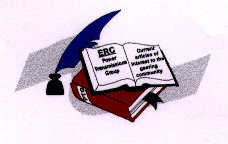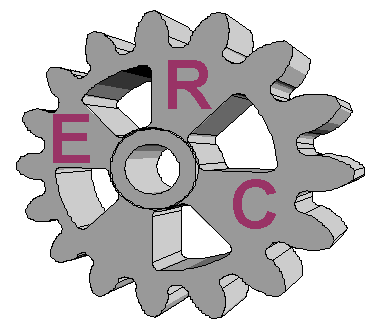
Return to the Power Transmission Group main page.

Return to the Power Transmission Group main page.
 To enter the article library.
To enter the article library.
Engineers at Lexmark reduced gear noise and wear by using Carilon thermoplastic on toner cartridge gears for Optra printers. (Compared to other gear materials such as lubricated acetal and nylon, Carilon offers beffer toughness, wear qualities, and processibility at a lower price.
Dynamically stable, wear-resistant plastics are critical for gears on laser-printer toner cartridges. That's why engineers at LexDmark International, Lexington, Ky., recently chose Carilon thermoplastic from Shell Chemical Co., Houston. The new material meets gear-tooth toughness requirements, operates quietly, and resists creep and wear. It is used in a 40-mm gear which is part of the photoconductor drum within the toner cartridge of Lexmark's Optra network printer. The gear meshes with another plastic gear inside the printer. According to Lexmark, Carilon outperforms other resins such as nylon and octal wearing more slowly against plastic gears. Since gears transfer power and motion, tooth wear affects smoothness and can cause jitter that produces poor-quality prints. In addition, neat (unfilled) Carilon performs as well as lubricated acetal typically used for gears.
Another benefit of the new resin is its processibility. With a broad processing window, Carilon let Lexmark engineers use existing tooling, developed for former gear materials, to mold gears. The new material also eliminated concerns about moisture absorption non-nally associated with nylon and polycarbonates.
Article reprinted from Machine Design March issue.

HOUSTON (AP) - Houston-based Shell Chemical Co. is rolling out a new family of plastics that company officials hope will eventually expand the plastic content of the automobile.
Shell Chemical recently announced plans to begin commercial development of a new class of plastics dicovered accidentally by a Shell researcher 14 years ago.
This family of plastics - called aliphatic polyketones by chemists, but marketed under the simpler name Carilon - represents Shell Chemical's effort to break into the 5 billion pound-per-year world market for "engineering thermoplastic polymers."
Most consumers would recognize only one engineering thermoplastic - polyester - but the group includes jaw crackers such as polyamide, polyacetal, polycarbonate and polyphenylene oxide.
This is really the first of a new, core business that Shell expects to run globally," said Ellen McGowan, Shell Chemical's business manager for polyketones.
Shell officials tout Carilon's stiffness, toughness, resistance to wear and ability to handle temperature extremes.
The automobile industry - which is constantly searching for ways to replace heavy, metal parts with lighter, plastic components to improve fuel efficiency - is a major target for Carilon products, said Joe Machado, polyketones technology manager for Shell Chemical's Westhollow Technology Center in far west Houston.
The first step will be to replace traditional plastic parts, Machado said. Whenever you introduce a new plastic, that's what's going to happen first.
Since they can be shaped much more easily than metal parts, plastic components give engine designers greater flexibility. Car manufacturers typically will wait until they redesign a car model, take a whole new look at the design, and replace metal parts with plastic.
Shell officials plan to zero in on fuel delivery systems such as fuel lines, fuel pumps, fuel line connectors and related parts. Gradually, they hope to expand their market to include valve covers, intake manifolds and, potentially, radiator parts.
Plastic components currently make up about 245 polmds of about 7.6 percent of the weight of an average car, said Gerald Esper, director of the vehicle environment department for the American Automobile Manufacturers Association. Back in 1978, plastic components made up about 180 pounds, or 5 percent of the weight of a typical car.
The weight of vehicles has come down in general, and part of that weight reduction is substitution of materials - plastic for steel or aluminum for steel, Esper said.
But the use of plastic parts in auto manufacturing has not been an Unmitigated success.
Carmakers, for instance, had installed plastic gasoline tanks on a number of models, only to learn that they were not as good as metal tanks at retaining gasoline vapors.
That kind of leakage is one problem Shell officials believe they have resolved with their Carilon plastics.
Besides the automotive industry, Shell plans to target business machines, since Carilon can be used to make gears for products such as computer printers and photocopiers, Machado said.
Shell also will market its product to electronics producers, as well as hose and pipe makers.
Carilon will be produced at a Shell plant in Carrington, England, near Manchester. The plant initially will have the capacity to produce 20 million pounds of Carilon annually, although that capacity could be doubled if demand is great.
It looks like it has some exciting potential from the balance of properties that it's got, said Patrick Duke, vice president of polymers at the Houston-based consulting firm DeWitt & Co.
What remains to be seen is whether the cost and performance of the new product can compete against those of existing products, Duke said.
The Carilon family was first discovered in 1982 by Eite Drent, a chemist working in Shell's research laboratory in Amsterdam, the Nedierlands.
While trying to find a cheaper, easier way to produce a solvent, Drent was experimenting with various catalysts used to speed up chemical processes.
After trying one catalyst, Drent and his colleagues opened the testing container, expecting to see the solvent. Instead, they found a semi-crystalline structure made up of carbon monoxide and ethylene molecules.
We were very excited, Drent said. This is the reason you do research.
Reprinted from the WWW, April 1997

 ERC Home
ERC Home

Return to the Power Transmission Group main page.
 Return to the Articles Library.
Return to the Articles Library.